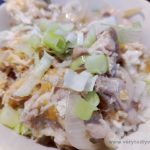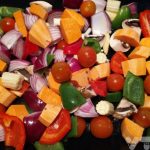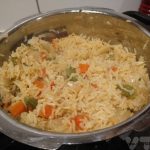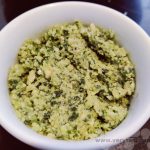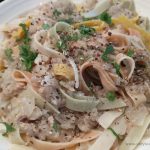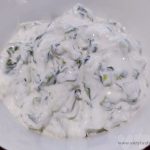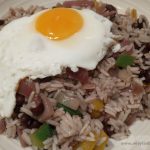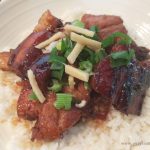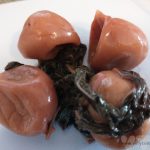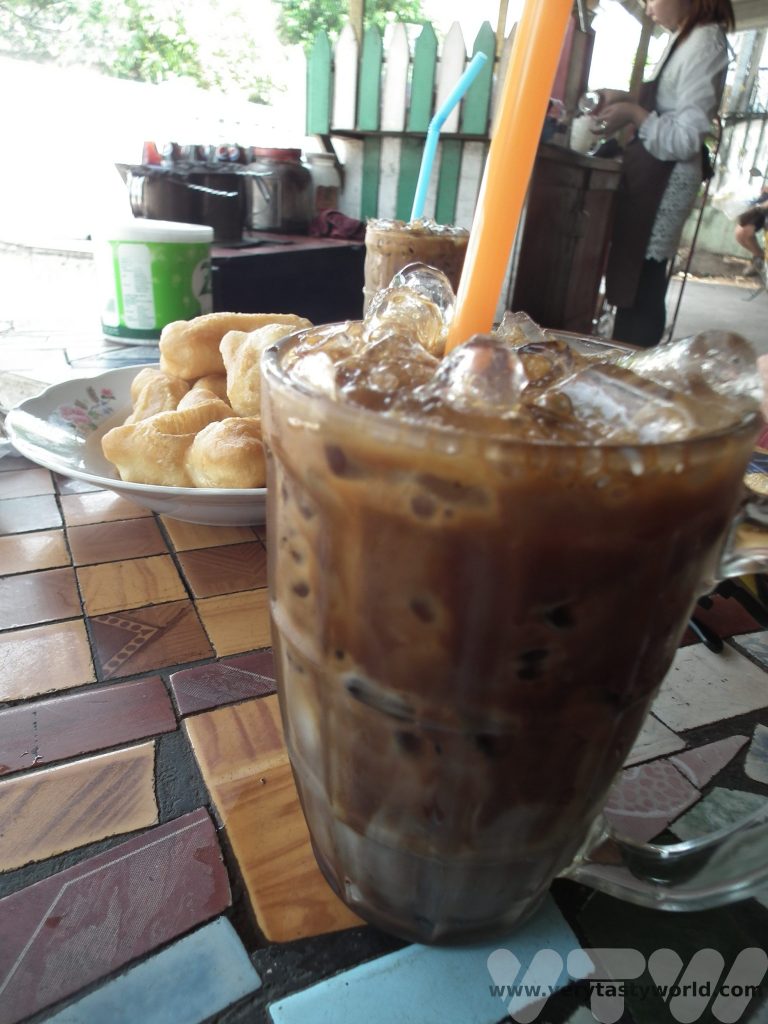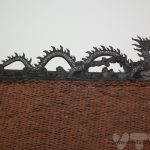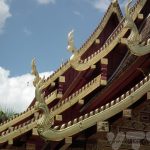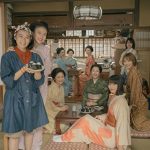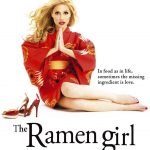Happy New Year of the Rabbit
Year of the Rabbit begins 22nd January 2023 and celebrations will ensue.
Like many festivals all over the world, such as Diwali, Eid and Easter, Chinese New Year is derived from the lunar calendar and is celebrated with food, family reunions and festivities.
The animals associated with the years are based upon the Chinese horoscope. All twelve signs of the Chinese zodiac have different symbols and it is thought that people’s character traits can be reflected in those born in a particular year.

So the personality traits for someone born in the Year of the Rabbit could be deemed to be quiet, elegant, kind and responsible. The characteristics of Very Tasty World’s founders could be reflected in their zodiac animals because VTW has a compassionate, generous and very diligent Pig associating with a sharp, smart, recondite cheeky Monkey.
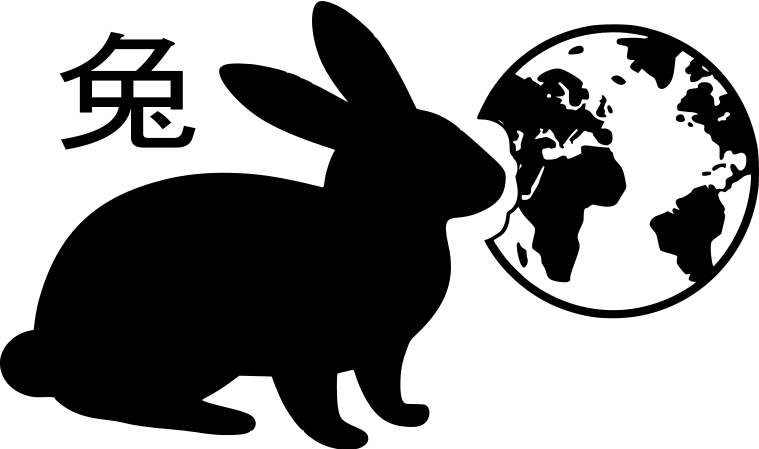
Our visit to China during the latter part of the New Year celebrations, known as Spring Festival, some years ago can be found in the post Gong Xi Fa Cai or Gung Hay Fat Choy! Happy New Year! It was a joyful time.
Food For the Festivities
Like many annual celebrations and gatherings this is the time for family and food with wide celebrations. Reunions and recipes join together in sociability and culinary joy.
Some of the more popular traditional dishes associated with lunar new year in China include a whole fish cooked with ginger, garlic and spring onion. Jiaozi – dumplings- represent coins which symbolise prosperity throughout the year. Long noodles suggest longevity and happiness and spring rolls signify wealth.
We have a recipe for baked whole fish cooked with ginger, garlic and spring onions using sea bass. The fish is always served whole as the head and tail represent the start and end of the year.

And it’s not all savoury. Sweet glutinous rice cakes suggest the possibility of moving up in the world and sweet rice balls which represent family harmony. Happy New Year!

- RECIPE Oyakodon Donburi
- Zero Waste Recipes Before Your Holiday
- RECIPE: Vegetable Biryani Tamil Nadu Style
- RECIPE: Vegan Wild Garlic Pesto
- Recipe: Venetian Pasta Sauce
- RECIPE: Biryani Raita Recipe
- RECIPE: How to Make Costa Rica’s Gallo Pinto
- Recipe: Japanese Simmered Pork Belly – Buta no Kakuni
- RECIPE: How to Make Umeboshi
Temple of Heaven, Beijing
The Temple of Heaven, along with the Forbidden City, is a must-see attraction in Beijing. Both of these amazing building complexes were constructed in the 15th century by the Yongle Emperor, the third emperor of the Ming Dynasty.
The Temple of Heaven comprises a complex of beautiful buildings set inside a lovely and extensive park. Its purpose was for the Emperor to pray for good harvests.
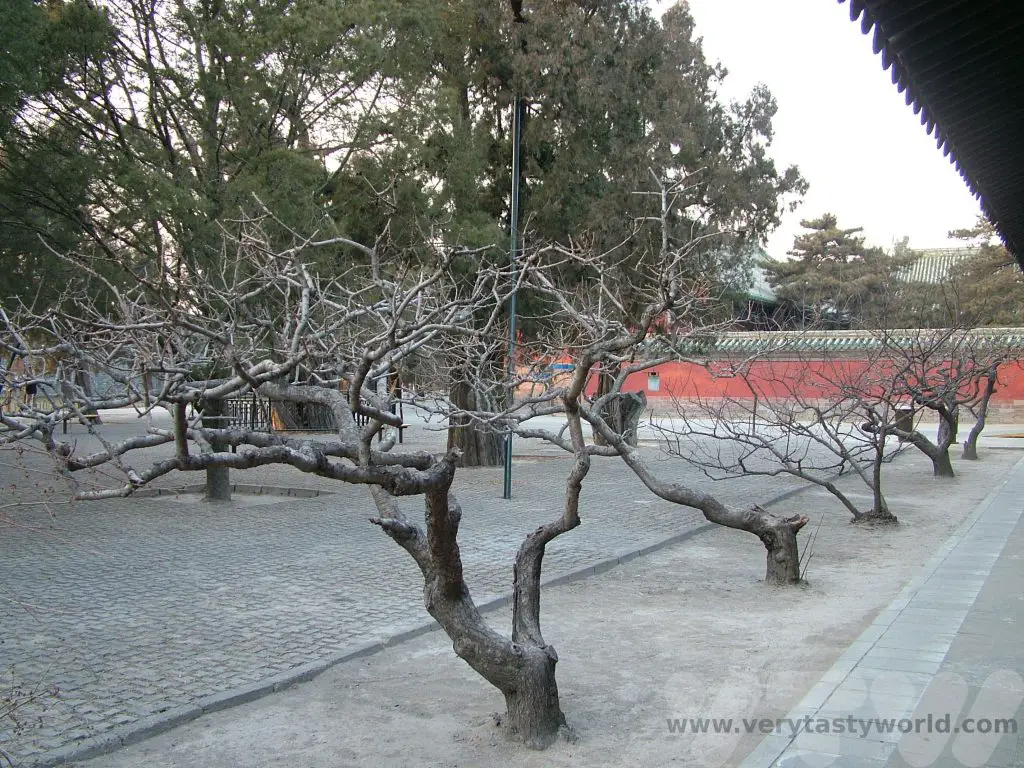
The Circular Mound Altar was constructed in the 16th century in the time of the Ming Dynasty. Its purpose was for the Emperor to pray for favourable weather, particularly in times of drought. It has three circular terraces, each of which has four entrances with precisely nine steps. The number nine plays a significant part of the architectural design with many of the numbers of pillars and slates being multiples of nine. It is surrounded by gorgeous marble carvings. The design also allows sound to resonate throughout the construction creating an echo that amplifies a voice – useful for the Emperor to make certain that the gods would hear his prayers.
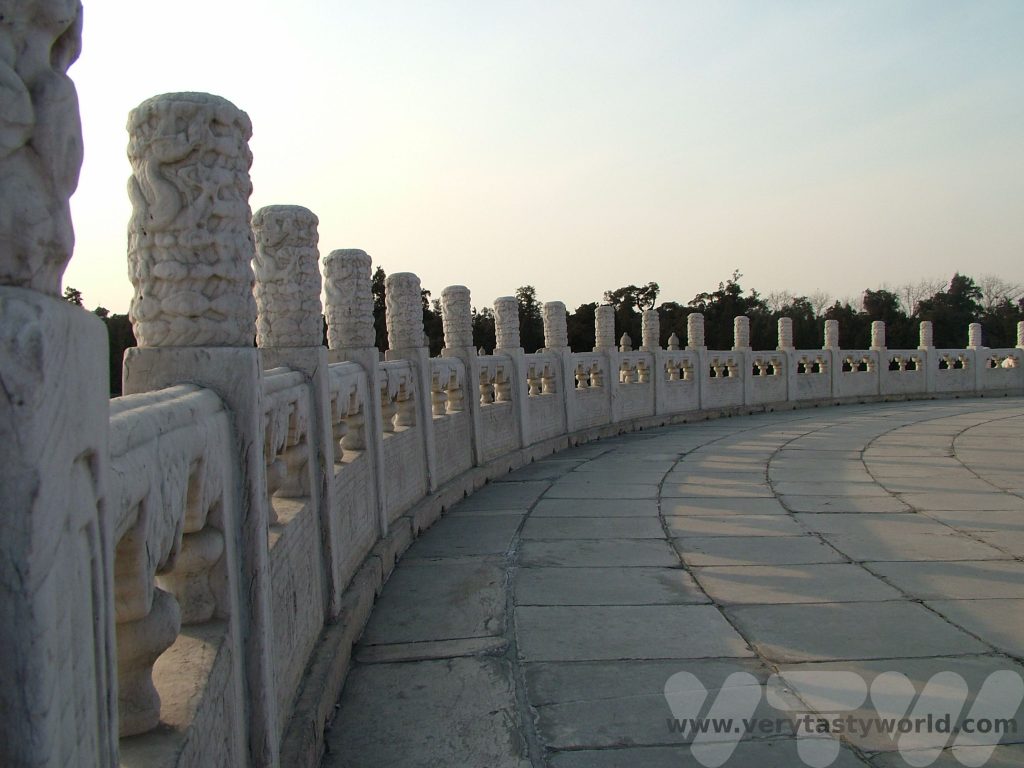

The Imperial Vault of Heaven is circular building, one storey tall.
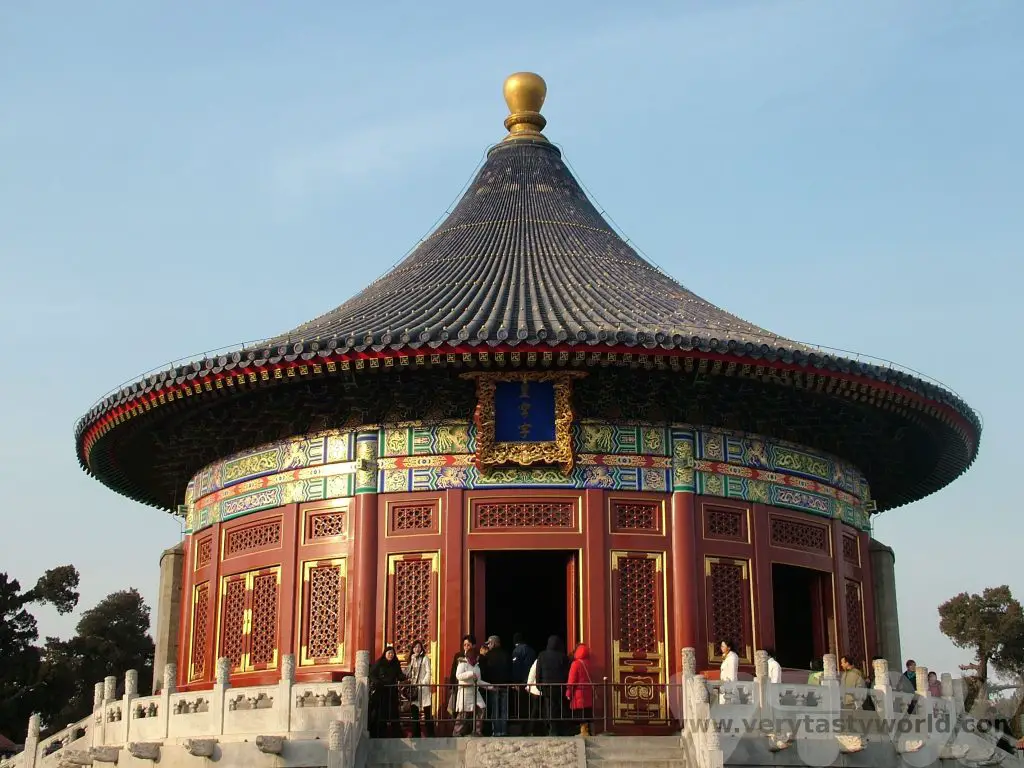
From this, a walkway leads to the Hall of Prayer for Good Harvests. Like the Imperial Vault, it is a gorgeous circular construction, and large too, at 36 m across and 38m high. As its name suggests, it was here that the Emperor prayed for good harvests. A wooden construction, apparently built without using nails. The decoration is marvellous – highly detailed and intricate. The detailed decoration contains images of mythical creatures and birds and radiates with a wonderful glow as the light of the setting sun casts its rays upon the building.
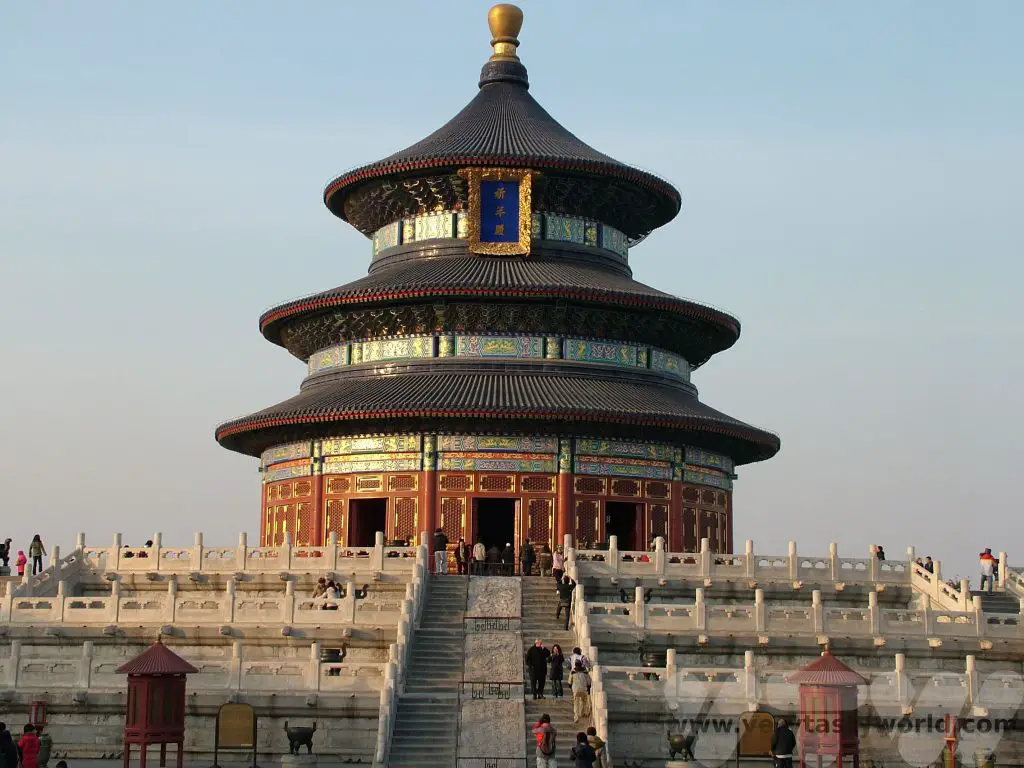
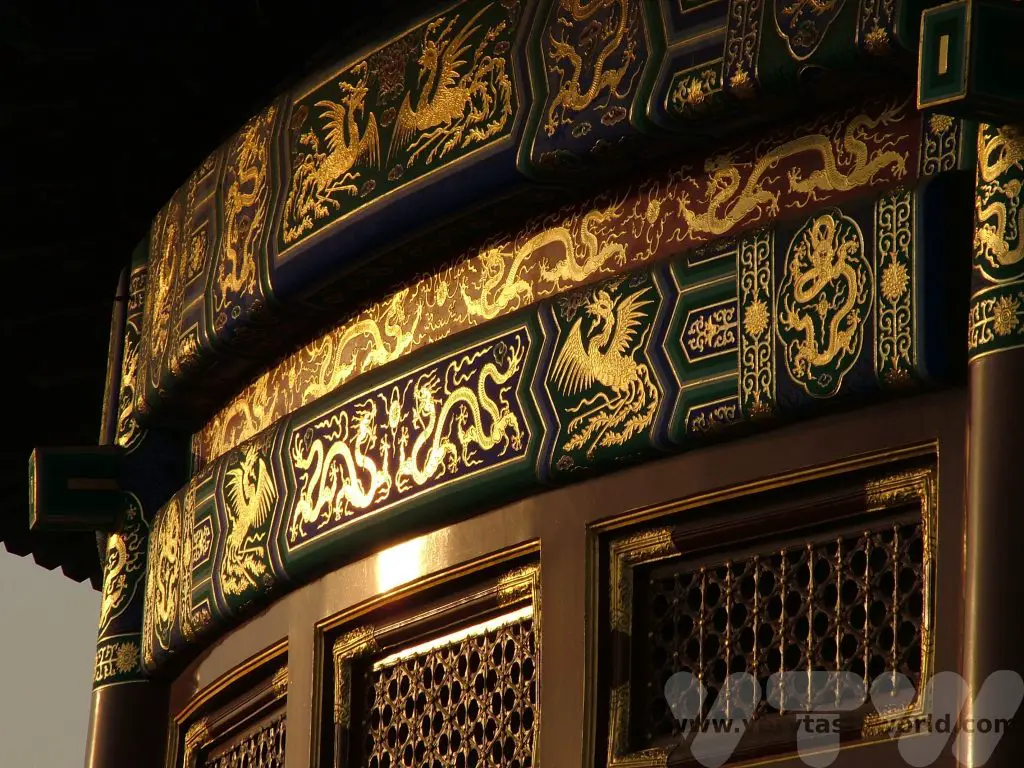
Tea Houses Outside the Temple of Heaven Beijing
There are a number of tea houses just outside the Temple of Heaven. They provide an opportunity to taste a variety of Chinese teas.
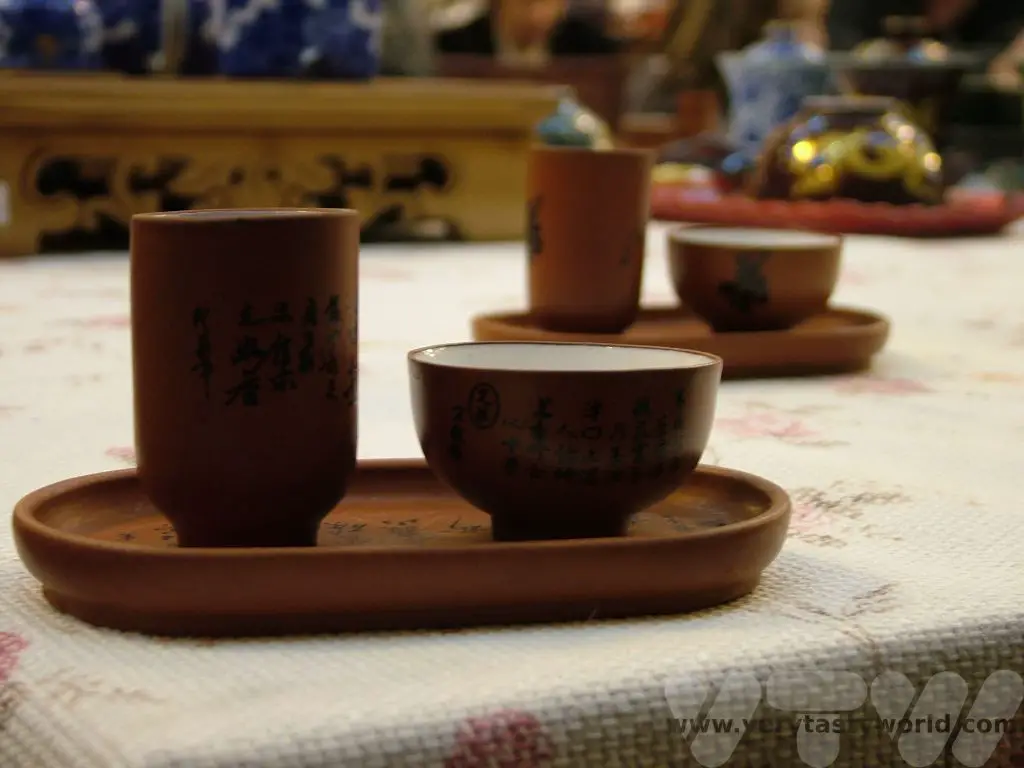
It was in one of these that we discovered blooming teas. These are neatly crafted hand-bundled into a small ball, a little smaller than a ping pong ball. They look rather nondescript folded up.
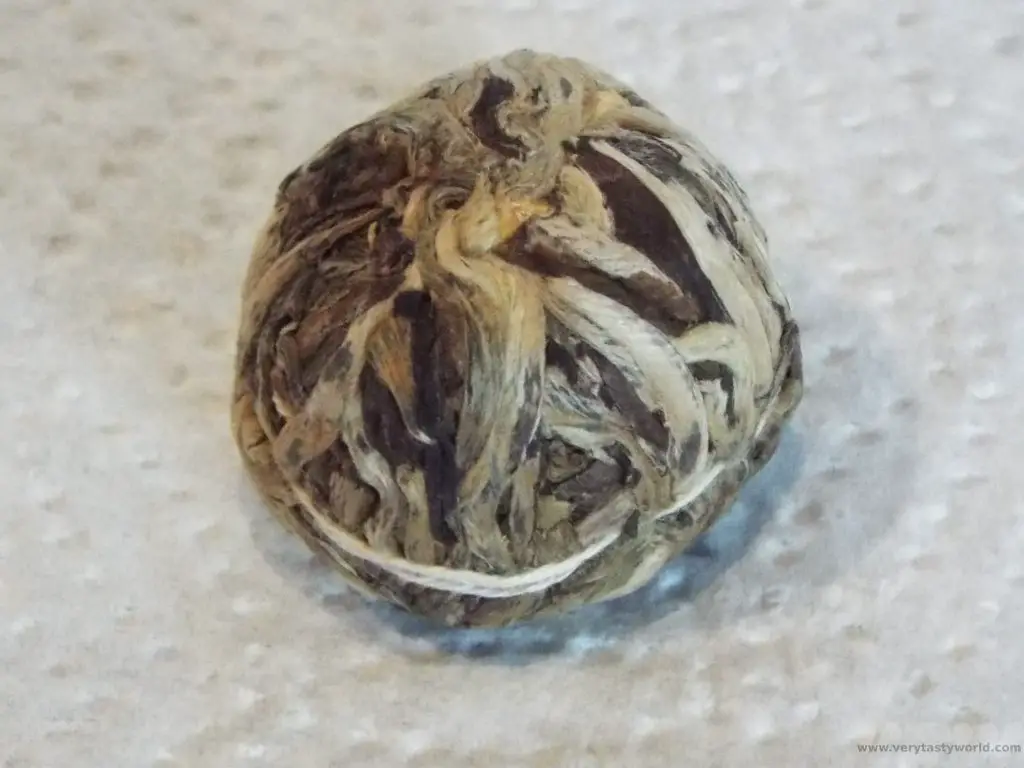
But pop them into some boiling water and they bloom into a flower whilst infusing the water to create tea. They are usually comprised of white tea or green tea leaves. Sometimes jasmine or similar flowers are used.
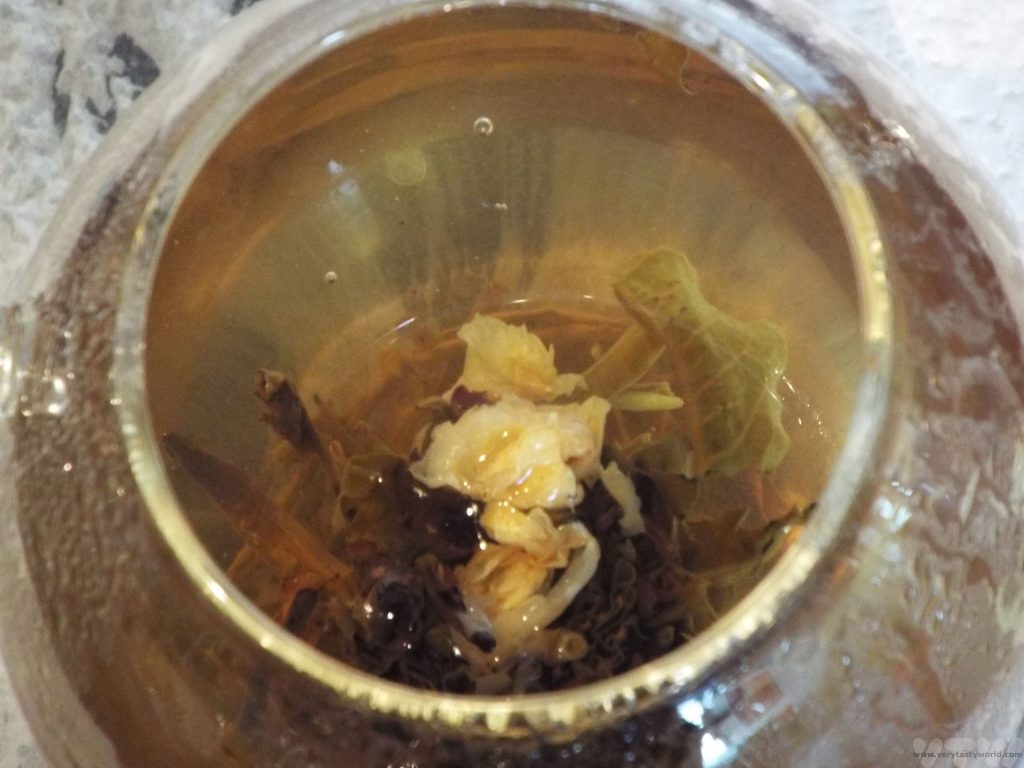
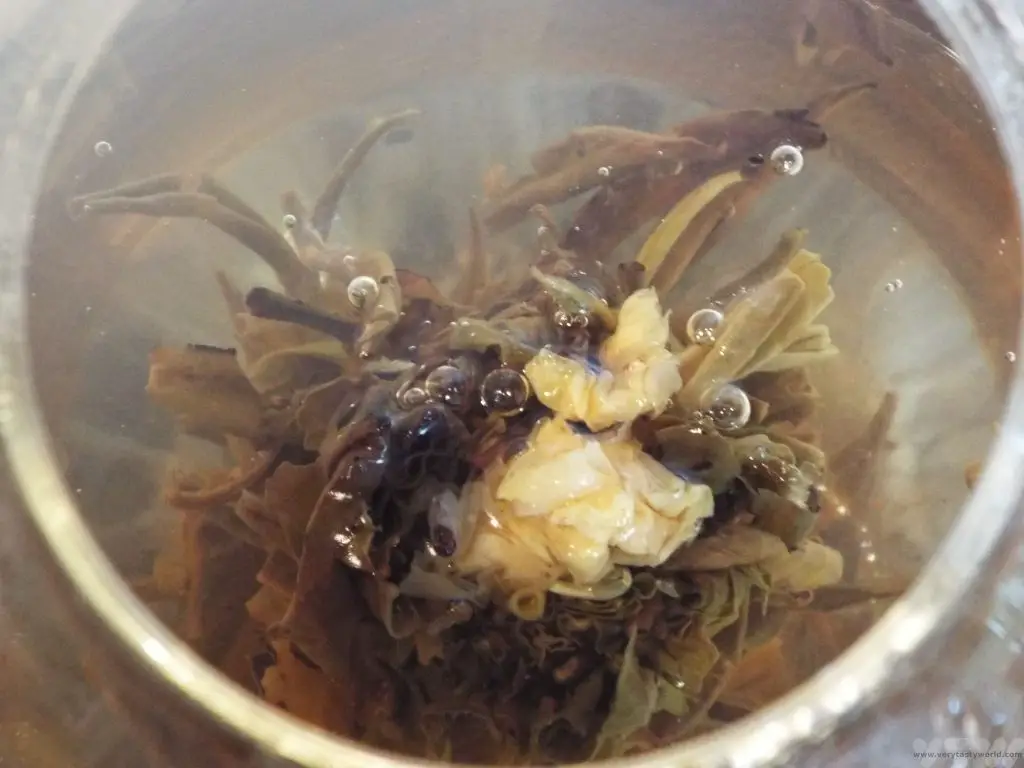
The flavour is mild but some have a touch of tannin.
Delicious and beautiful. You can buy these online. We also treated ourselves to a splendid glass teapot so that we could enjoy watching the flower bloom.
Couple of things worth noting. If you are on a tour you are likely be invited to purchase products in the inevitable shop that can be found alongside museums, factories, tourist attractions and tea shops. Our experience was that we weren’t pressured to buy anything. We also found that in some factory outlets prices were regulated by the government which meant that we didn’t have to haggle, much to our relief, because we’re rubbish at it. Although we did somehow come home bearing a vaccuum-packed silk duvet from one emporium because it was genuinely good value.
There are some scams whereby friendly people approach you and invite you to drink tea with them at a local tea house. It may be perfectly legitimate and genuine but there have been situations where you are taken to what appears to be a charming, authentic tea house and when the bill arrives it is considerably higher than you might expect for a pot of tea.
Related Posts You May Enjoy
Chinese Spring Festival – Happy New Year!
Lunar New Year is the most important date in the Chinese calendar. It is celebrated not only in China but many other South East Asian countries. Although it is usually known as Chinese New Year in Western countries it is more commonly known as Chinese Spring Festival at home.
Like many festivals all over the world, such as Diwali, Eid and Easter, Chinese New Year is derived from the lunar calendar and is celebrated with food, family reunions and festivities.
It’s a really busy time of year when people travel across the country to visit their families in their home towns and it’s worth noting that flights and trains are likely to be booked up and very crowded. But it’s a joyous time and everyone in the country views it as a cause for celebration. Displays featuring the animals of the zodiac can be found all over town.
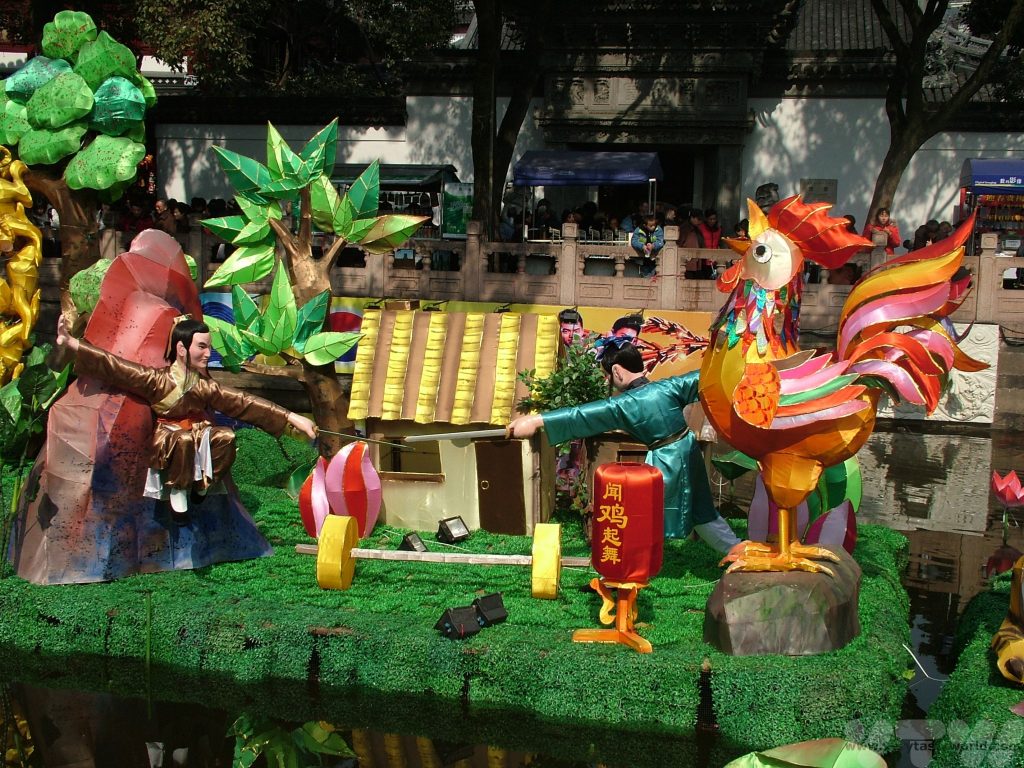
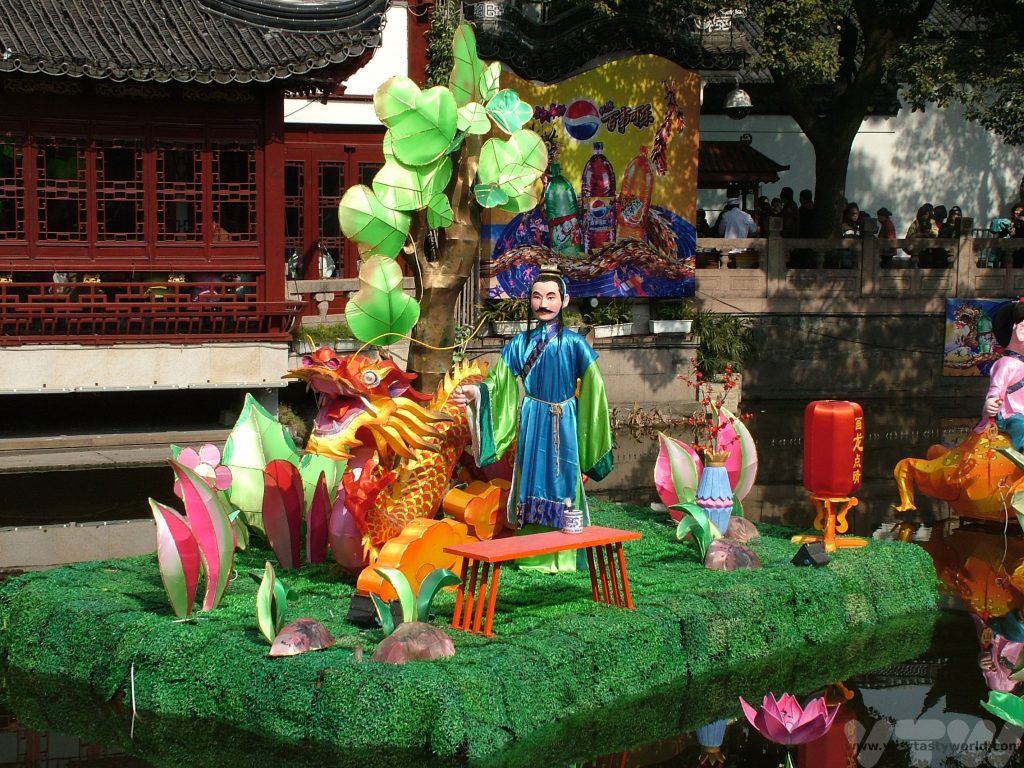
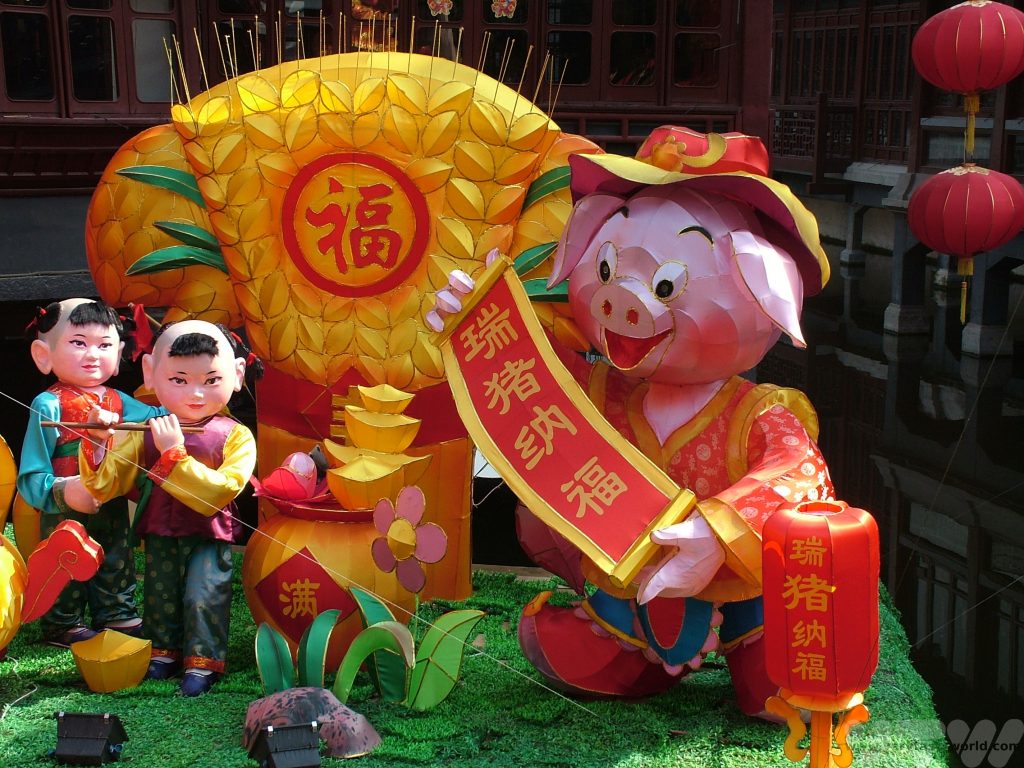
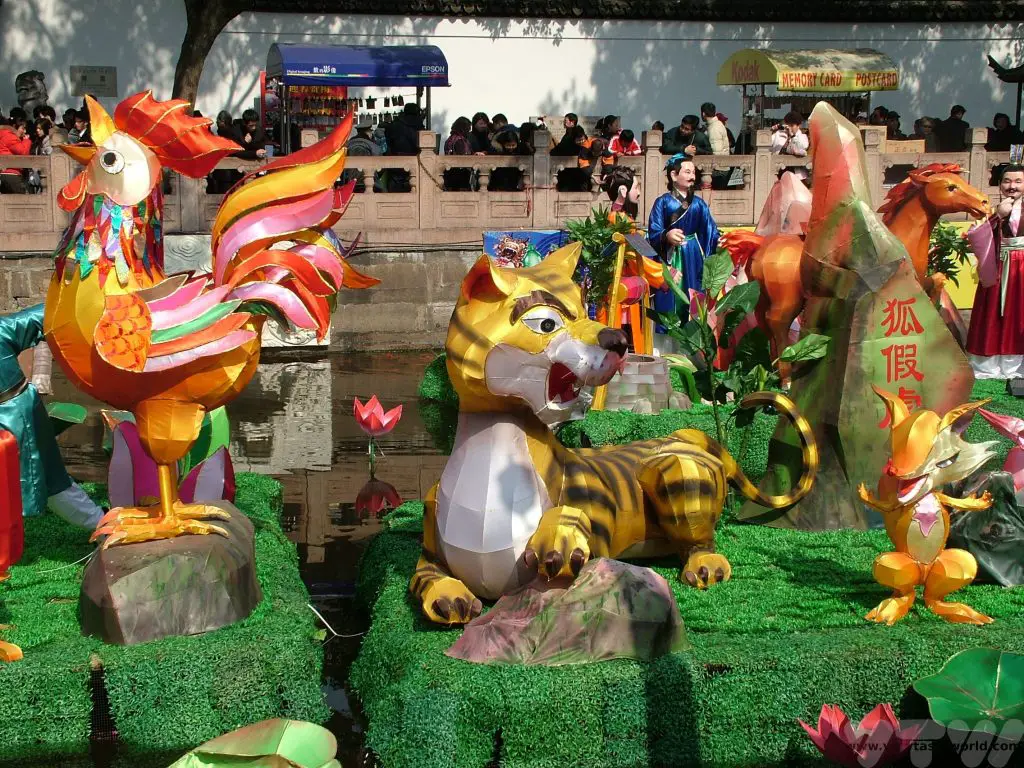
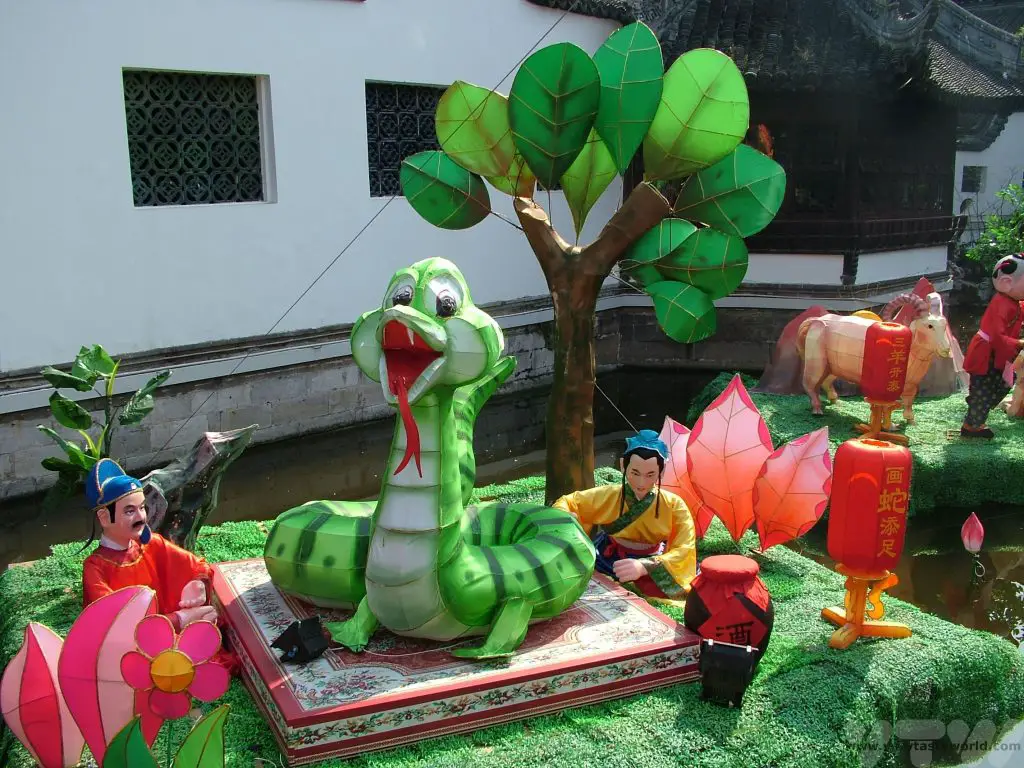
It’s also a lovely time of year because spring blossoms are often coming into bloom, especially in the southern part of the country.
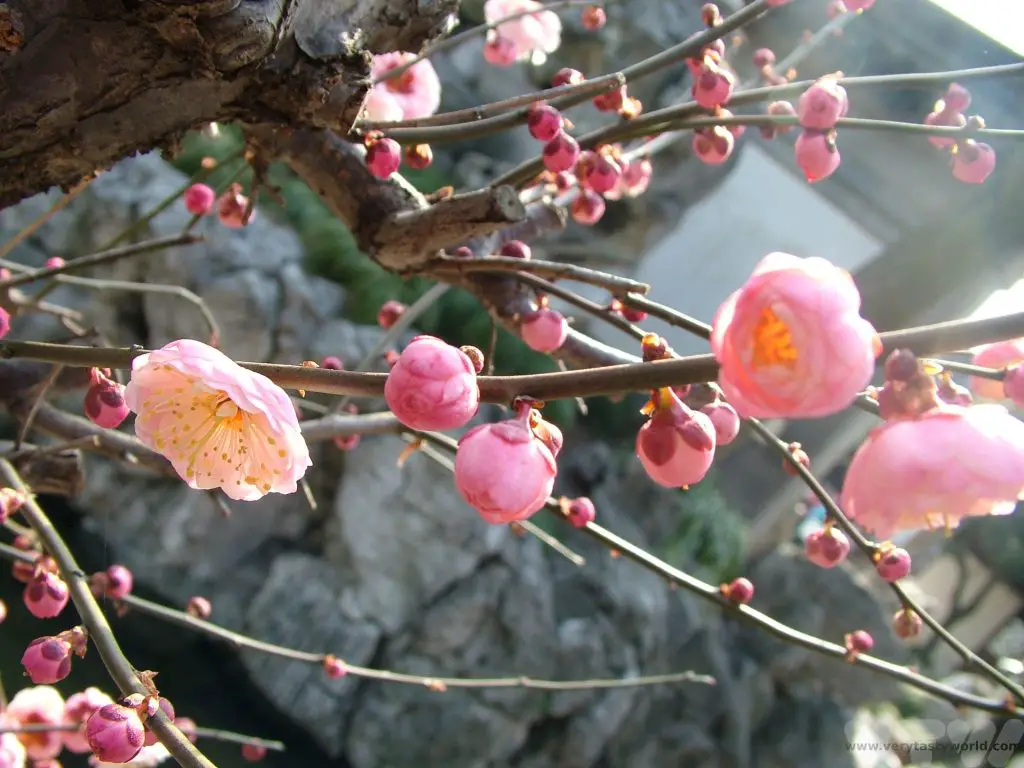
Food is an important part of Chinese New Year when families come together and enjoy the celebrations. We have spent new year with Chinese friends in the UK who served us a feast. Traditional dishes include a whole fish, this one cooked with ginger, garlic and spring onion. It’s important that the fish is served whole – head to tail represents the start and end of the year and it also represents plentiful food and good luck.
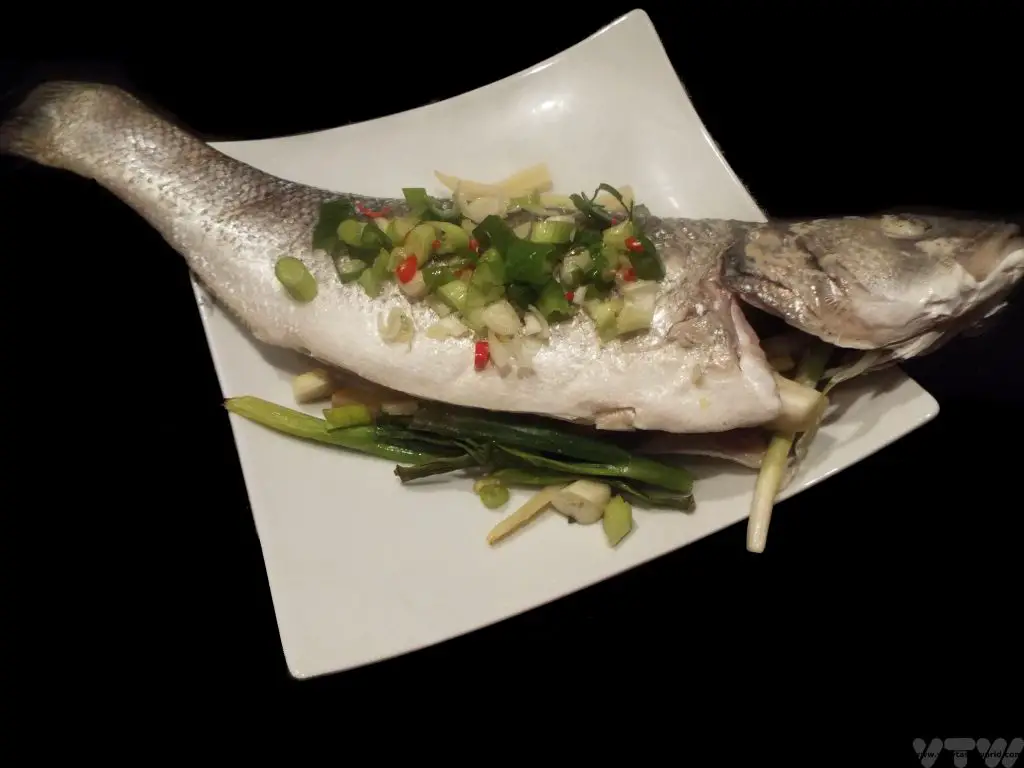
This fish dish is easy to cook and tastes delicious. There’s a recipe here. Catfish and carp are popular fish.
We also sat around the table and made jiaozi (dumplings). These represent old-style Chinese coins which symbolise prosperity throughout the year. It’s great fun to sit around a table together drinking beer and chatting as you fill the dumplings, which are later boiled, steamed and/or fried and then enjoyed at midnight. Sometimes a gold coin is put inside one of the dumplings for a lucky recipient.
The dumplings can be filled using a variety of ingredients: minced pork and cabbage or chive (or cabbage and chive), chicken, mutton, prawns or fish are popular, as are vegetable fillings, such as mushrooms, cabbage, leek, spinach, and spring onions. Any of these ingredients can be combined. The dumplings are usually served with a dipping sauce. Soy sauce with vinegar and sesame oil is popular and gives a salt, sour, smoky flavour to accompany the dumplings. You can make it to taste but it’s worth noting that you only need a tiny amount of sesame oil – just a few drops – as it has an incredibly intense flavour. Some dipping sauces add a dash of chilli oil to provide heat.
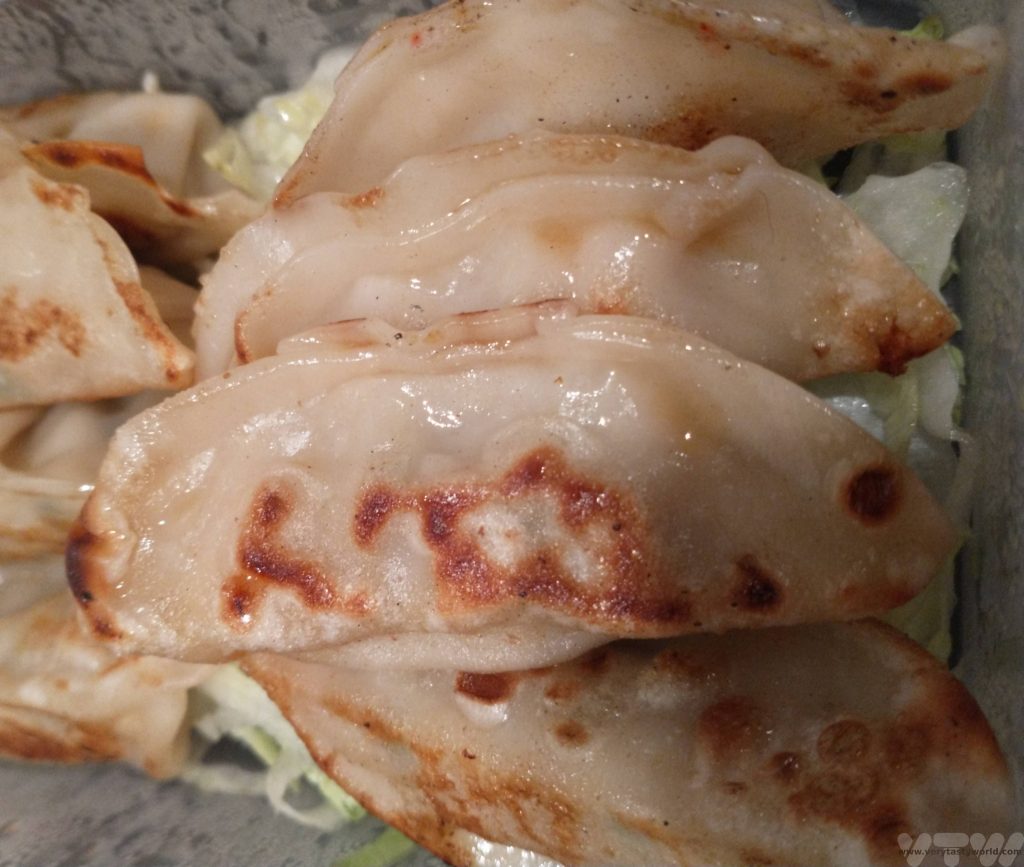
Other traditional foods include noodles, which represent longevity (due to the length of the noodles) and happiness as well as spring rolls which represent wealth. Sweet dishes include glutinous rice cake which apparently ensure you can aim for a higher position in life/work (and hence the prospect of a better income) and sweet rice balls which represent family harmony. These, particularly, are eaten throughout spring festival.
Although the highlight of the celebrations revolve around the lunar new year, Spring Festival actually lasts for a fortnight. It begins on the new moon and ends 15 days later on the full moon. The last night is known as the Lantern Festival. Red lanterns can be seen everywhere towards the end of the celebrations. This can be a bit confusing as during the rest of the year red lanterns will often indicate that the establishment is a restaurant.
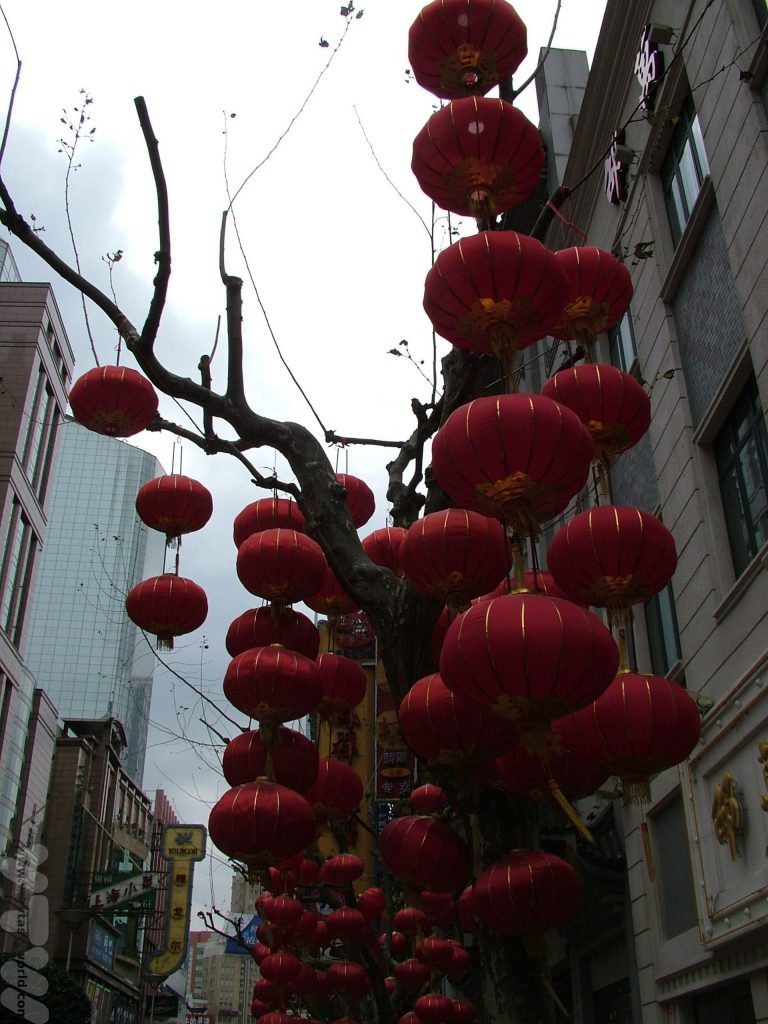
We were lucky enough to be in Xi’an on the last night of Spring Festival some years ago and went along to the Big Wild Goose Pagoda to join in the celebrations. We had never seen so many fireworks – they started at 6pm and went on till midnight – you could see fireworks in every direction you looked – and hear firecrackers. (In recent years, use of fireworks has been reduced or banned for environmental reasons.) The atmosphere was terrific – everyone was incredibly friendly on this happy occasion – and it was very much a family event.
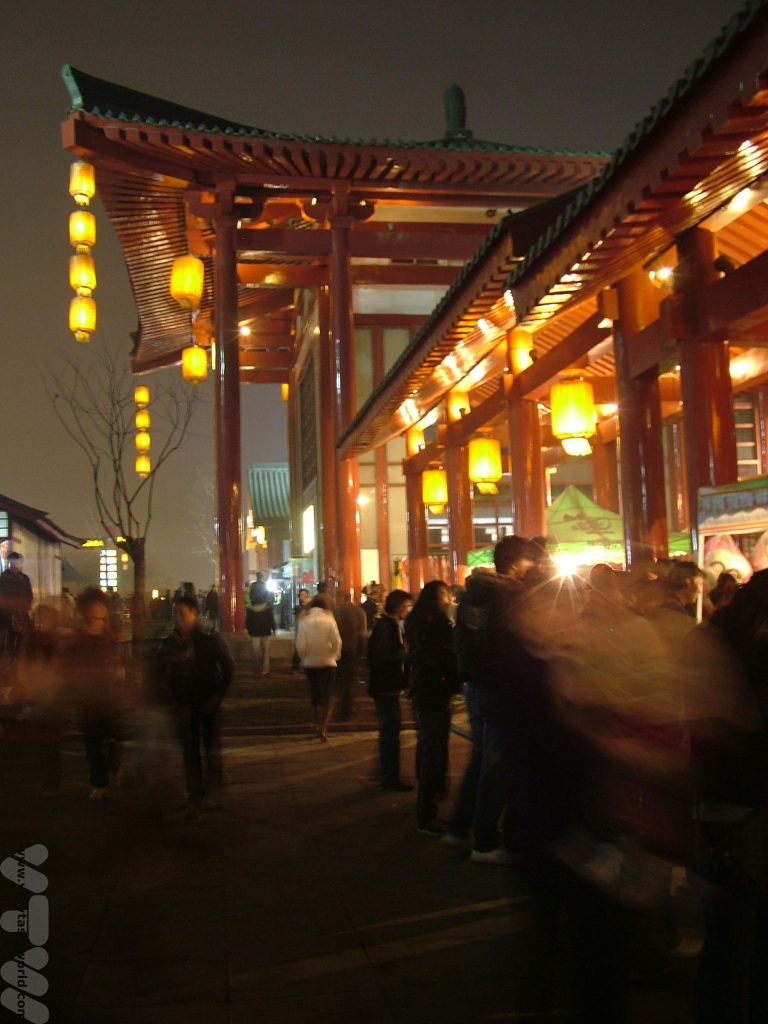
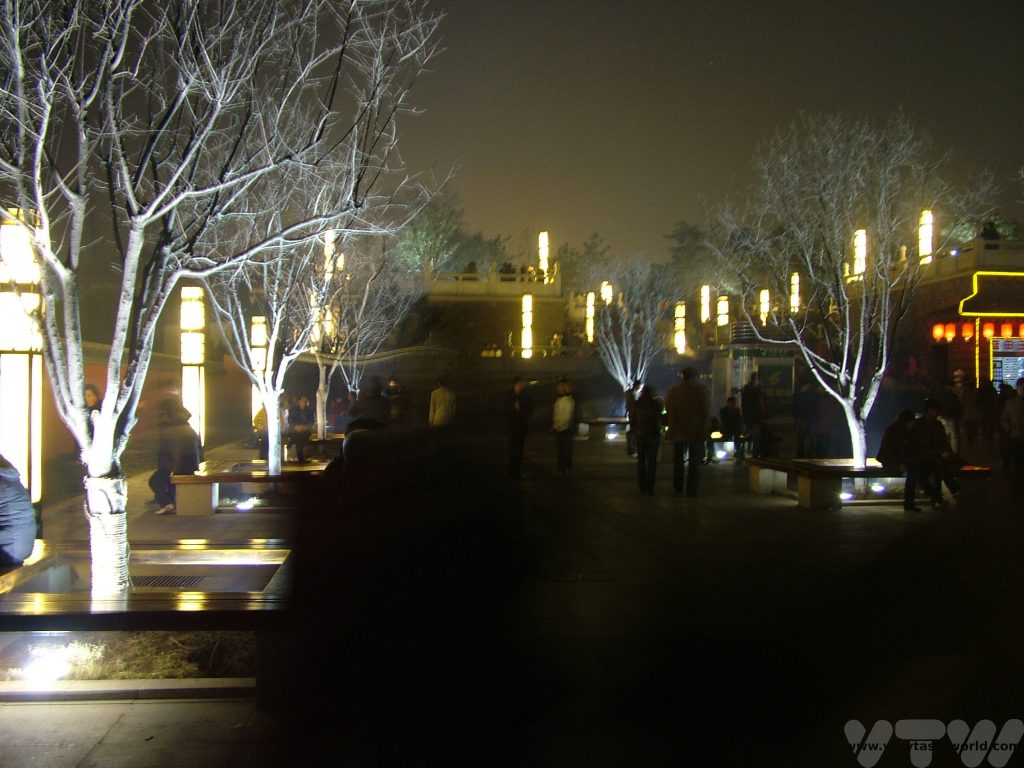
Xi’an has a dancing fountain – it has the form of a T shape that is about 50m across and 100m long. It’s located on the north square of the Big Wild Goose Pagoda. Every night a variety of music that ranges from traditional Chinese to Western classical and Cantopop plays – and the fountain dances along, forming a colourful waterscape. All the water drains away immediately into a reservoir to be stored for the next show. The timing of the show varies depending on the season so, if you are visiting the area, it’s worth checking out the timetable so as to be sure to catch it.
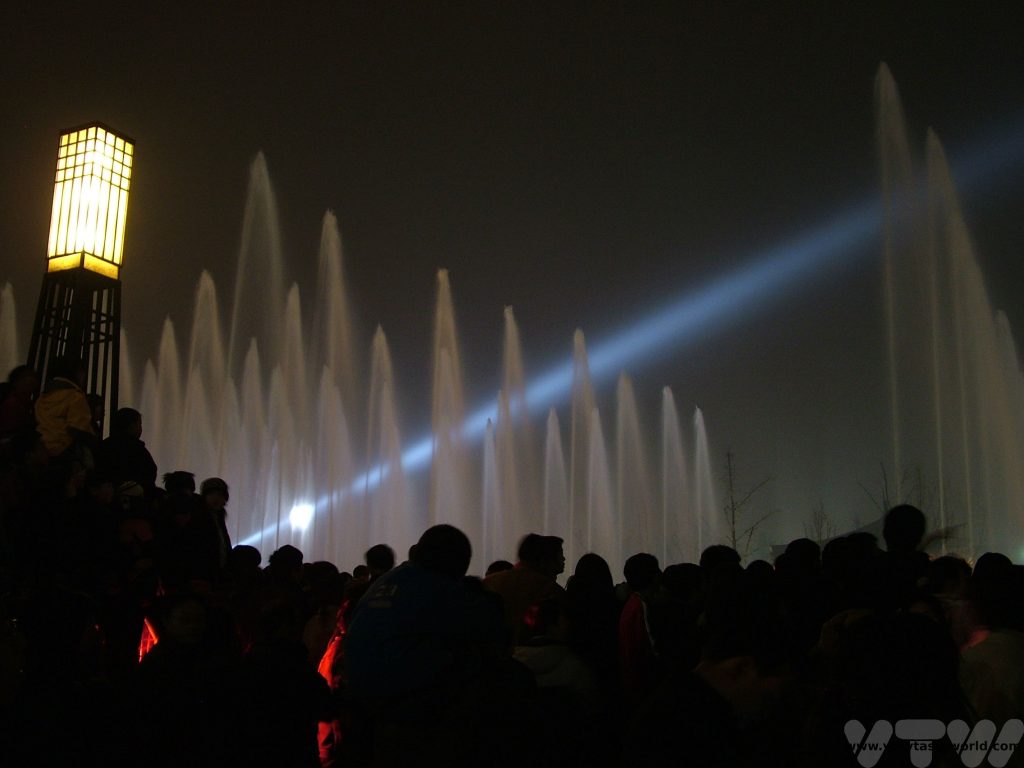
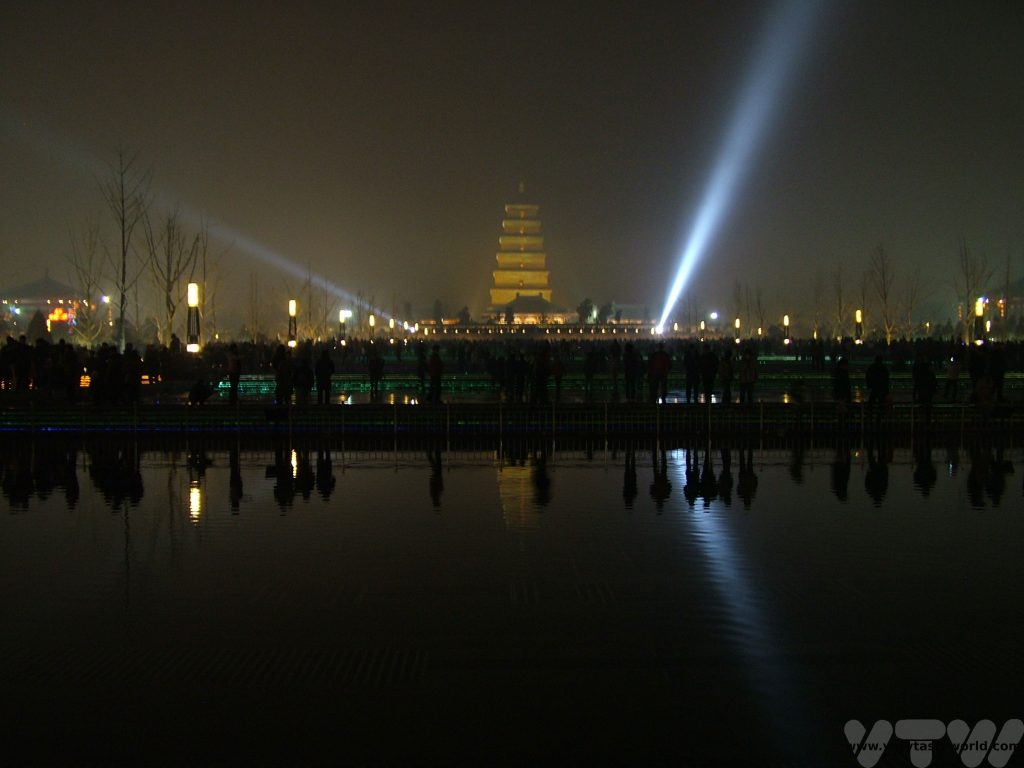
2924 is Year of the Dragon and begins on February 10th. Celebrations will ensue culminating on February 24th with the Lantern Festival.
The animals associated with the years are based upon the Chinese horoscope. All twelve signs of the Chinese zodiac have different symbols and it is thought that people’s character traits can be reflected in those born in a particular year.
The personality traits for someone born in the Year of the Dragon could be deemed to be strong and independent but maybe seeking love and support – impulsive adventurers. The characteristics of Very Tasty World’s founders could be reflected in their zodiac animals because VTW has a compassionate, generous and diligent Pig associating with a sharp, smart, recondite cheeky Monkey.
Gong Xi Fa Cai! Or Gong Hei Fat Choy!
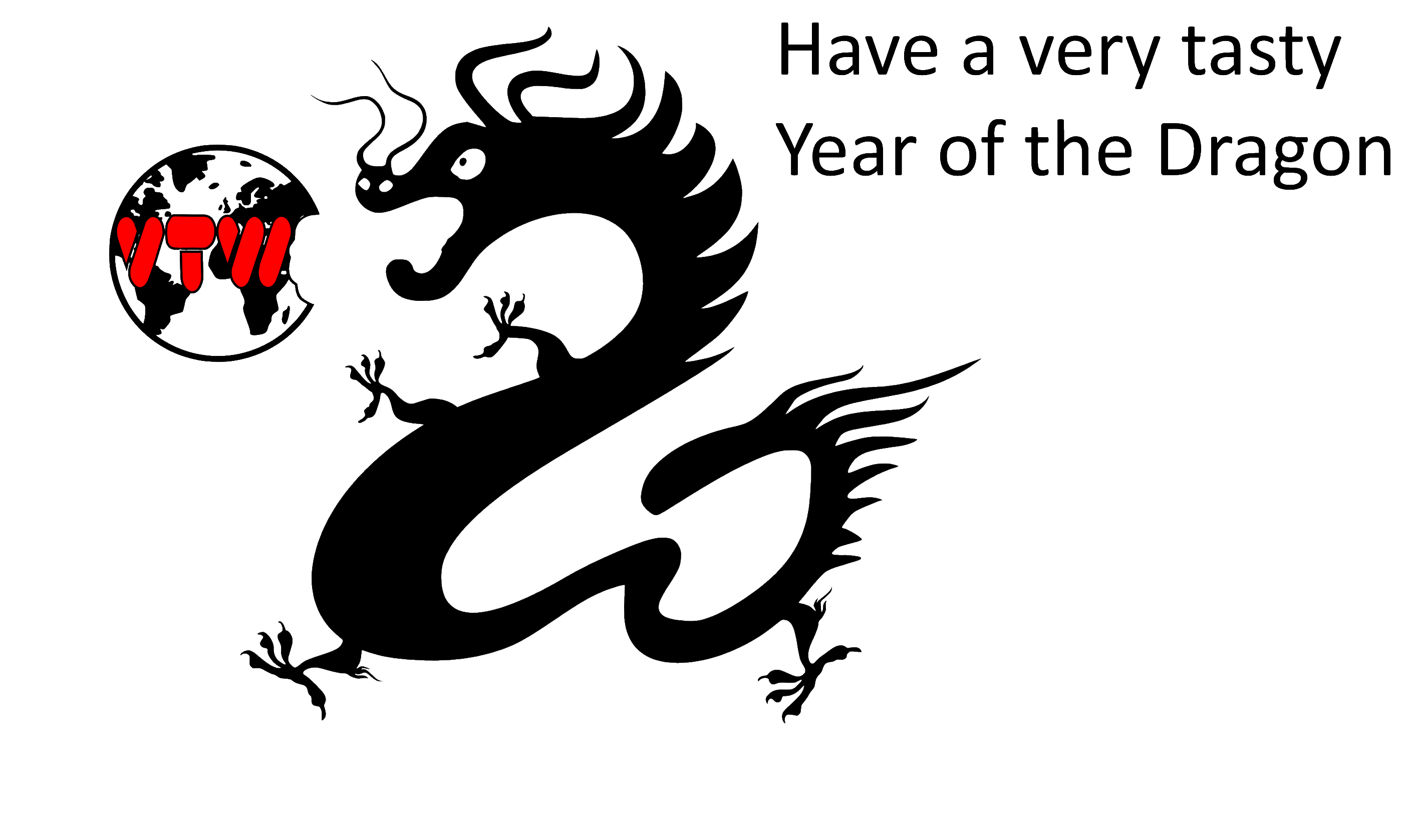

RECIPE: Baked Sea Bass in Parchment
with Ginger, Garlic and Spring Onion
A whole fish baked with ginger, garlic and spring onion is one of the traditional dishes associated with lunar new year in many countries in South East Asia. The reason that the fish is served whole is because the head and tail represent the start and end of the year.
We have a recipe for baked sea bass in parchment. It uses typical ingredients in Chinese cookery – the aromatic flavours of ginger, garlic and spring onion. Some methods steam the fish, other oven-bake. This recipe is very simple

1 whole sea bass, scaled and gutted
5 cm ginger
5 spring onions
3 cloves of garlic
1 chilli for garnish

METHOD
Turn on the oven to 200C, 180C fan, or gas mark 6.
Slice the ginger (you don’t have to worry about peeling the ginger) and four of the spring onions into julienned strips, roughly chop the garlic. Open the cavity of the sea bass and stuff the ingredients inside.
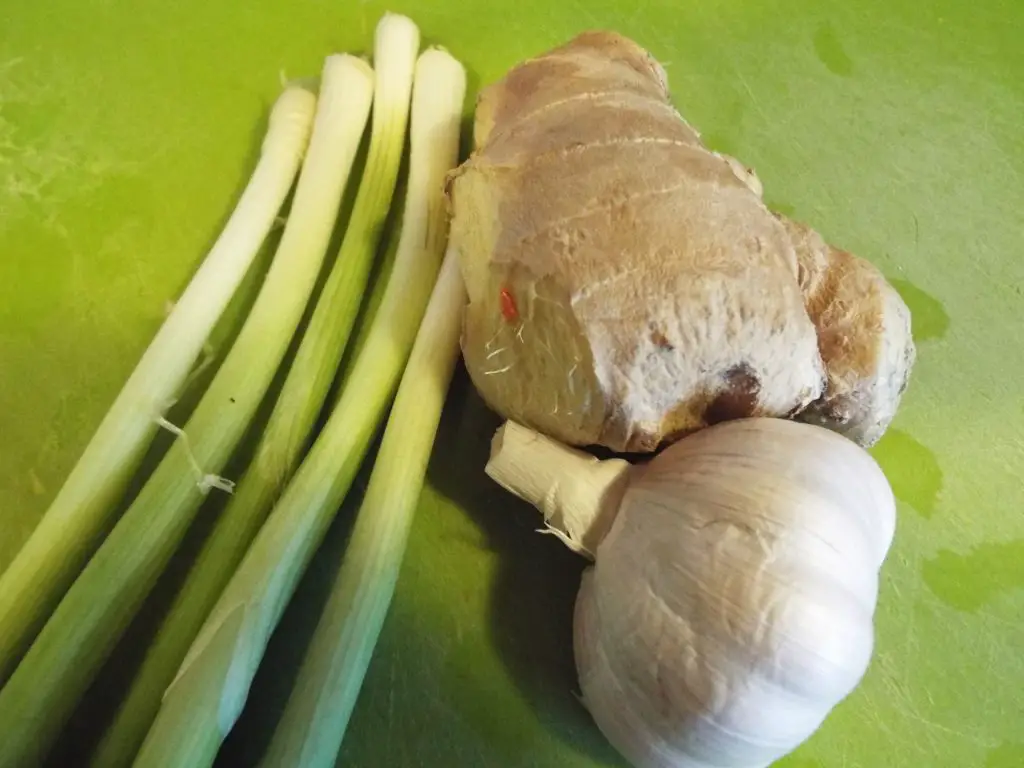
Place the whole sea bass onto a sheet of baking parchment.
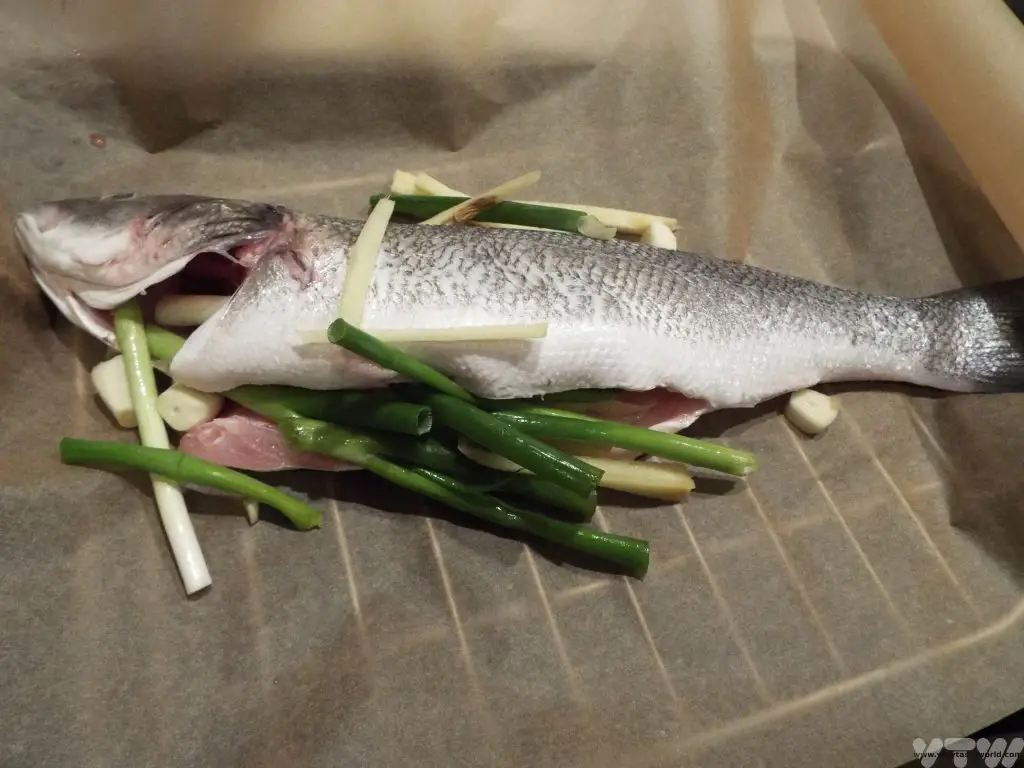
Bring the sides of the paper over the fish and make a loose fold. It doesn’t need to be tightly sealed – enough to let steam escape but not so loose that the lovely juices from the fish don’t get lost.
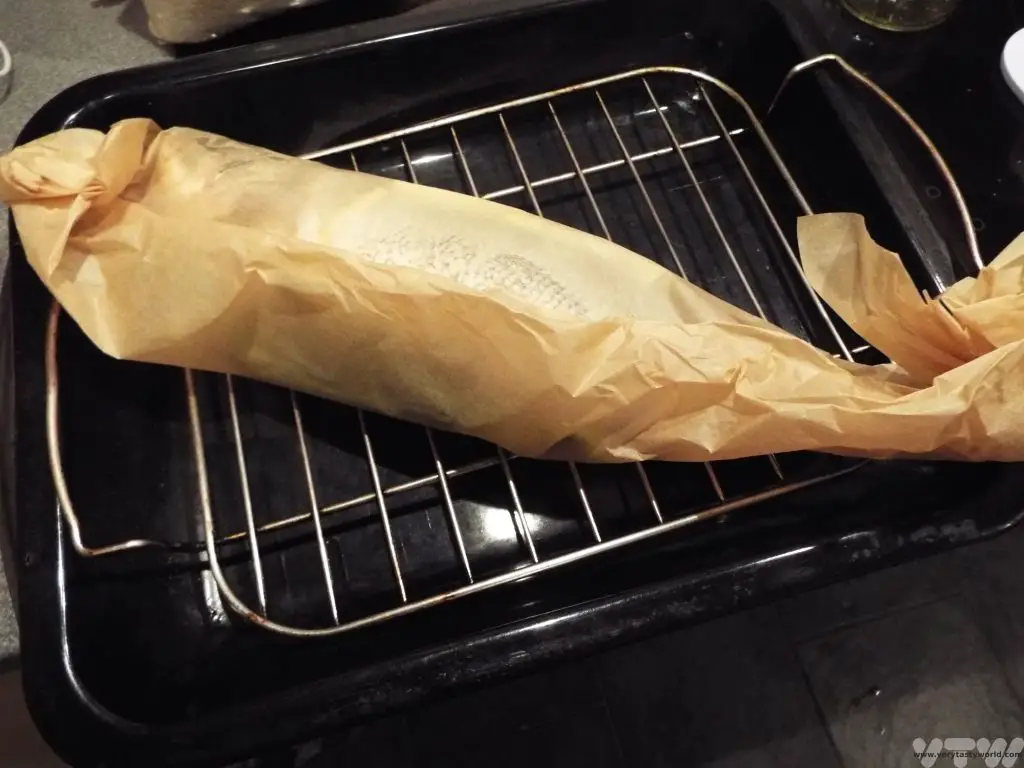
Bung into the oven and cook for 25 minutes.
When the sea bass is cooked, open up the paper parchment – the smell is amazing!
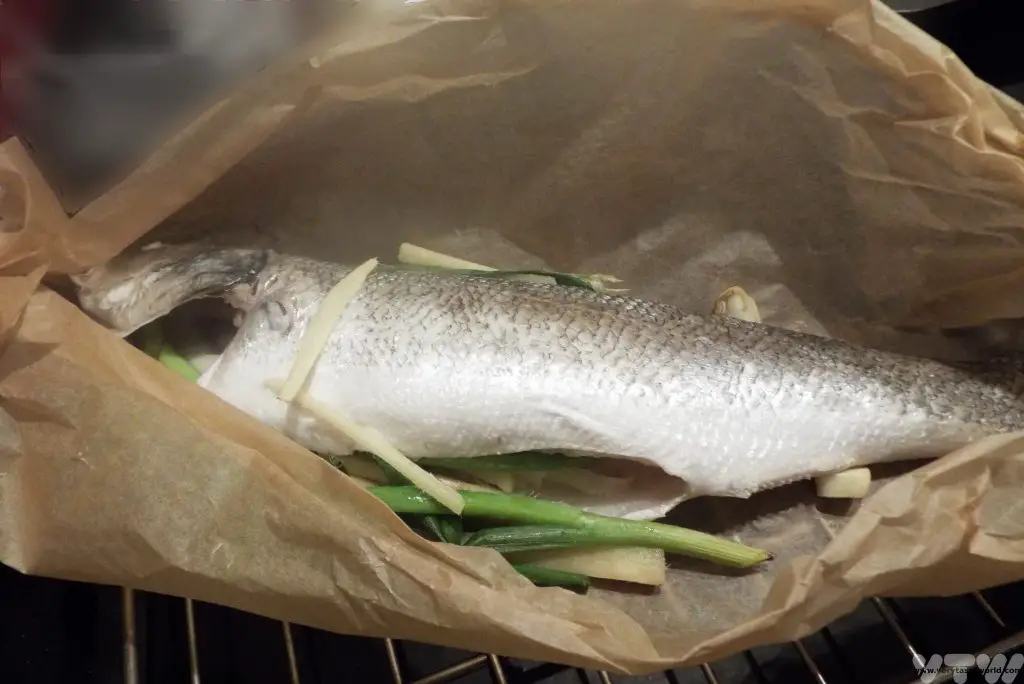
Then garnish with the remaining chopped spring onion and some finely sliced chilli. When celebrating Chinese Spring Festival at New Year, the fish is served whole to the table as a sharing dish.


- RECIPE Oyakodon Donburi
- Zero Waste Recipes Before Your Holiday
- RECIPE: Vegetable Biryani Tamil Nadu Style
- RECIPE: Vegan Wild Garlic Pesto
- Recipe: Venetian Pasta Sauce
- RECIPE: Biryani Raita Recipe
- RECIPE: How to Make Costa Rica’s Gallo Pinto
- Recipe: Japanese Simmered Pork Belly – Buta no Kakuni
- RECIPE: How to Make Umeboshi
Film Review: The God of Cookery (食神 1996)

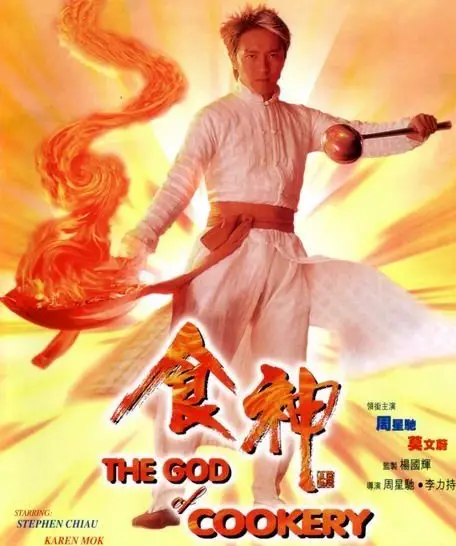
God of Cookery
Director: Stephen Chow Sing Chi (周星馳)
Country: Hong Kong
Cuisine: Chinese / Cantonese
Film Rating 6/10
Foodie Rating 5/10
The world of food is tough in more ways than one. The bourgeois rich insist on the distinctive, the unique and the best and are willing to pay for it, whilst the poor survive on what they can get. Then there is celebrity and publicity with competitions which ensure that skilled chefs become either rich or rejected largely because of trends and interpretations of the quality of the food, style, taste or even the performance of its chef. Self-declared God of Cookery (Stephen Chow) is extravagant, talented and very rich (partly the result of a dubious business empire which aggrandises his personality and food), able to detect the slightest of alterations in the quality of dishes created, savage in his criticisms (although accurate in detail) and a proficient user of culinary implements as he wields his chopper with remarkable ability. Martial arts meet culinary arts. Bull Tong (Vincent Kok) is his rival and a televised competition chaired by The Princess of Taste (Nancy Sit) leads to the vivacious cooking deity rejected to the streets where his need to make good food in a manner that satisfies his distinctive palate is put to the test. He comes across street-food maker Turkey (Karen Mok) who has surprising skills with her unique dishes (at a reasonable price) of pissing shrimp and beef balls. (You read that right!) With rival businesses, gangland trouble and a desire to return to the limelight with a restored reputation God of Cookery joins up with Turkey to make the ultimate in culinary perfection, the pissing beef ball.
The world of Stephen Chow Sing Chi (周星馳) is one that is filled with comedy (from slapstick, hilarious, offensive, inappropriate or just genius) but also physical prowess that mixes martial arts with comedy in a way that is distinctly different than the Buster Keaton style stunts of Jackie Chan. And so we have football in Shaolin Soccer (probably his best known film outside Hong Kong along with Kung-Fu Hustle) and also a lot of social commentary that addresses class and community in an often offensive manner which becomes funny when you understand the context and tone in which it is delivered. But here The God of Cookery does tackle social issues, media manipulation, business riches impeding the populace and criminal fraternities being comparable in their own way and yet – it’s a foodie film. With martial arts. Call it Kung-Food if you will. So here we have chopping and mincing as swift and accurate as you can imagine, ingredients juggled into place, eggs cracked open and whisked with speed and dexterity, meatballs filled with alarming accuracy. Oh, and deadly chopsticks as well as woks and cooking implements of all varieties that add to the mayhem. Sometimes the perpetrators of evil are served up as if they were cooked dishes themselves. The contrast between posh restaurants and street food are depicted in their clientele, their production and, of course, their means of depicting kung-food mayhem and gastronomic expertise. The similarities of the elite and the normal are shown to be different in how society reacts to them but in the world of The God of Cookery this is irrelevant as it focuses on the joy of great food, whatever the background of its creator. Just don’t forget to remove the excrement from the entrails dishes. Good advice there. May not be to everyone’s taste (unlike the pissing beef balls, of course) but still kung-food madness with socially underlined messaging that packs a punch – often between preparing ingredients.

